#52 in Vietnam
Bún Măng Vịt: Basic Information
Pronunciation
Alternative Name(s)
Dish Type
Course
Mealtime
Popular Variations
Bún Măng Vịt: Ingredients and Preparation
Main Ingredients
Main Cooking Method
Preparation Process
Bún Măng Vịt: A Deep Dive
Cultural Significance
Taste
Texture
Aroma
Color
Serving Style
Serving Temperature
Accompaniment
Occasions
Seasons
Special Diets
Calories
Popularity
Popular Similar Dishes
- Phở Gà
- Bún Cá
Popular Dining Area
Bún măng vịt is a traditional noodle soup from Vietnam that brings together slightly chewy duck meat in a clear broth with a balanced flavor and bamboo shoots. Typically, the noodles used for this light soup is a thin variety of rice noodle.
Interestingly, either fresh or dried bamboo shoots are suitable for making bún măng vịt, with the fresh variant offering a crunchy bite while the dried ones are chewy.
Additionally, a hot bowl of this noodle soup often comes with pig or duck blood curd and various herbs.
When serving, bún măng vịt is inseparable from a dipping sauce made by combining crushed ginger with fish sauce, sugar, water, and chili.
Furthermore, Vietnamese often pair this noodle street food with a plate of fresh vegetables to diversify the texture and flavor.
Alternatively, duck is also sometimes swapped out for chicken for its tender texture and accessibility everywhere.
Once all the features of bún măng vịt are in the palm of your hand, make sure to discover the ways to create this light noodle soup while also figuring out the positive and negative features of eating it. Then, explore some common concerns and dishes that bear similar concepts to it.
Key Points
Bún Măng Vịt Images
How to Make Bún Măng Vịt?
In general, here are the processes that people often need to go through to produce a tasty bowl of bún măng vịt:
Step1: Preparing Ingredients
Clean the duck meat thoroughly and cut it into serving pieces. Prepare bamboo shoots by slicing them into bite-sized pieces. In case you’re using dried bamboo shoots, soak them in water before boiling. Gather other ingredients like herbs, spices, and rice noodles.
Step2: Cooking the Duck
In a large pot, bring water to a boil. Add the duck pieces and let them cook for a few minutes to remove impurities. Remove the duck, discard the water, and clean the pot. Refill the pot with fresh water, add the duck pieces back in, and simmer until the duck is tender.
Step3: Preparing the Broth
To the simmering duck, add spices like star anise, cinnamon, and cloves. Season with salt, fish sauce, and a bit of sugar. Add the bamboo shoots, straw mushrooms, blood curd, and cook until tender.
Step4: Serving
Place rice noodles in individual bowls, ladle the hot broth with duck, bamboo shoots, and other toppings over the noodles. Serve with fresh herbs, lime wedges, and a dipping sauce.
Step5: Dipping Sauce
Combine crushed ginger with fish sauce, sugar, water, and chili, adjusting flavors as needed.
Step6: Accompaniments
Offer a plate of fresh vegetables like lettuce, mint, basil, and bean sprouts to complement the dish’s texture and flavor.
Don’t forget, it’s also essential to learn about the advantages and disadvantages before dining a dish like bún măng vịt.
Pros and Cons of Eating Bún Măng Vịt
These are the features that you should notice before eating bún măng vịt:
Pros
Cons
Don’t forget, you should take your time with a new dish such as bún măng vịt to find out all the information available about the dish. For that, you shouldn’t miss some of the common inquiries that people often have about this Vietnamese duck and bamboo shoots noodle dish.



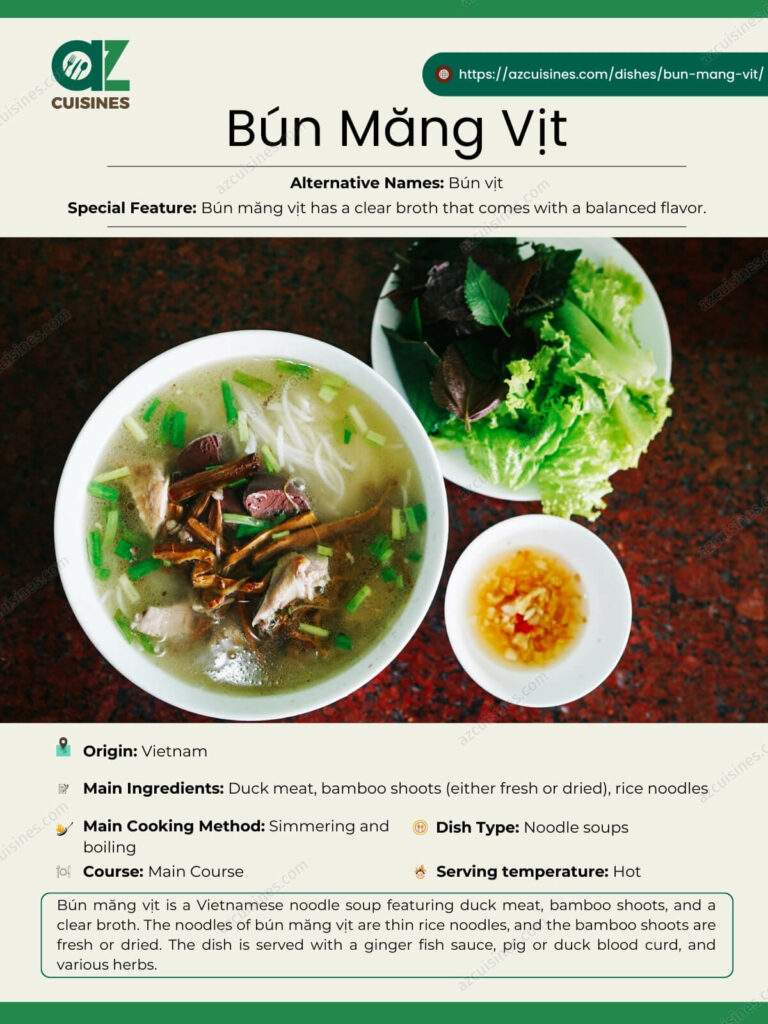

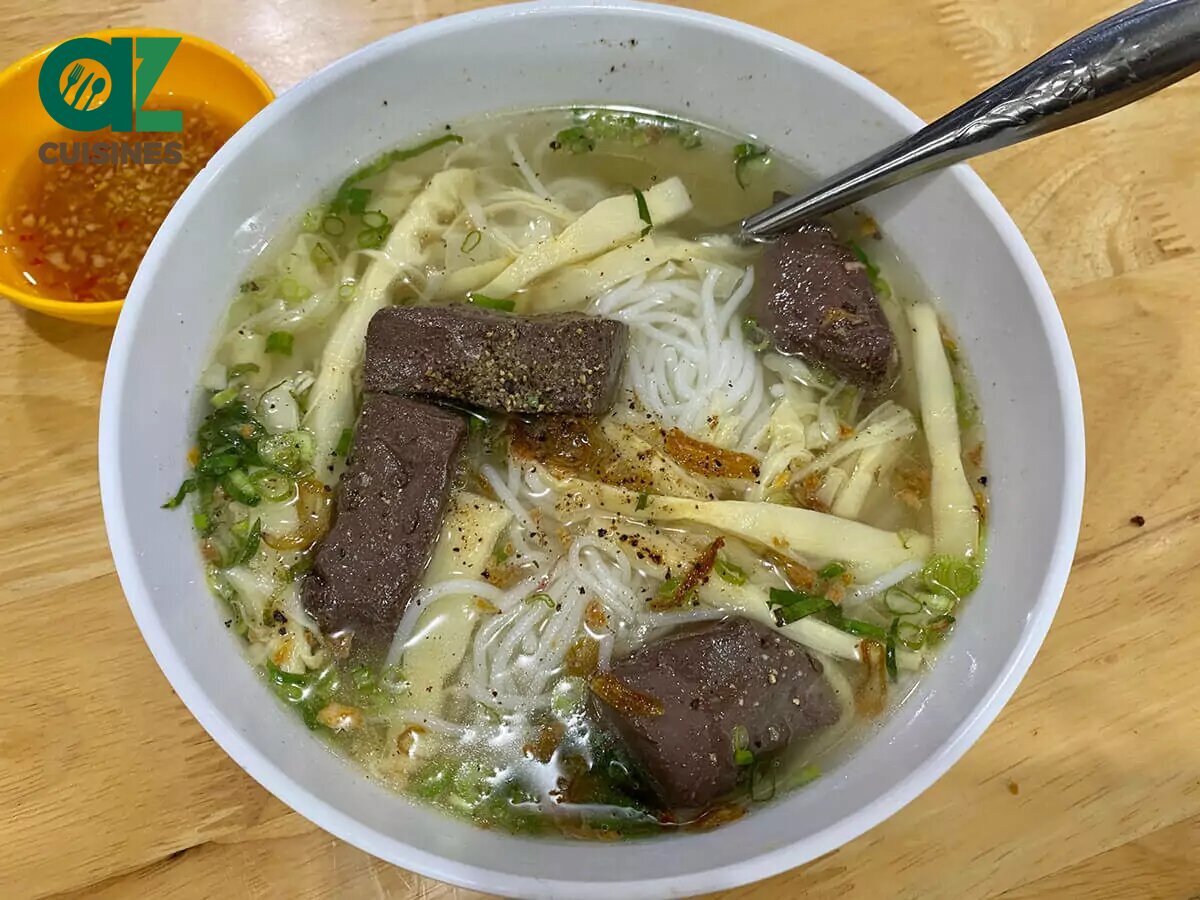
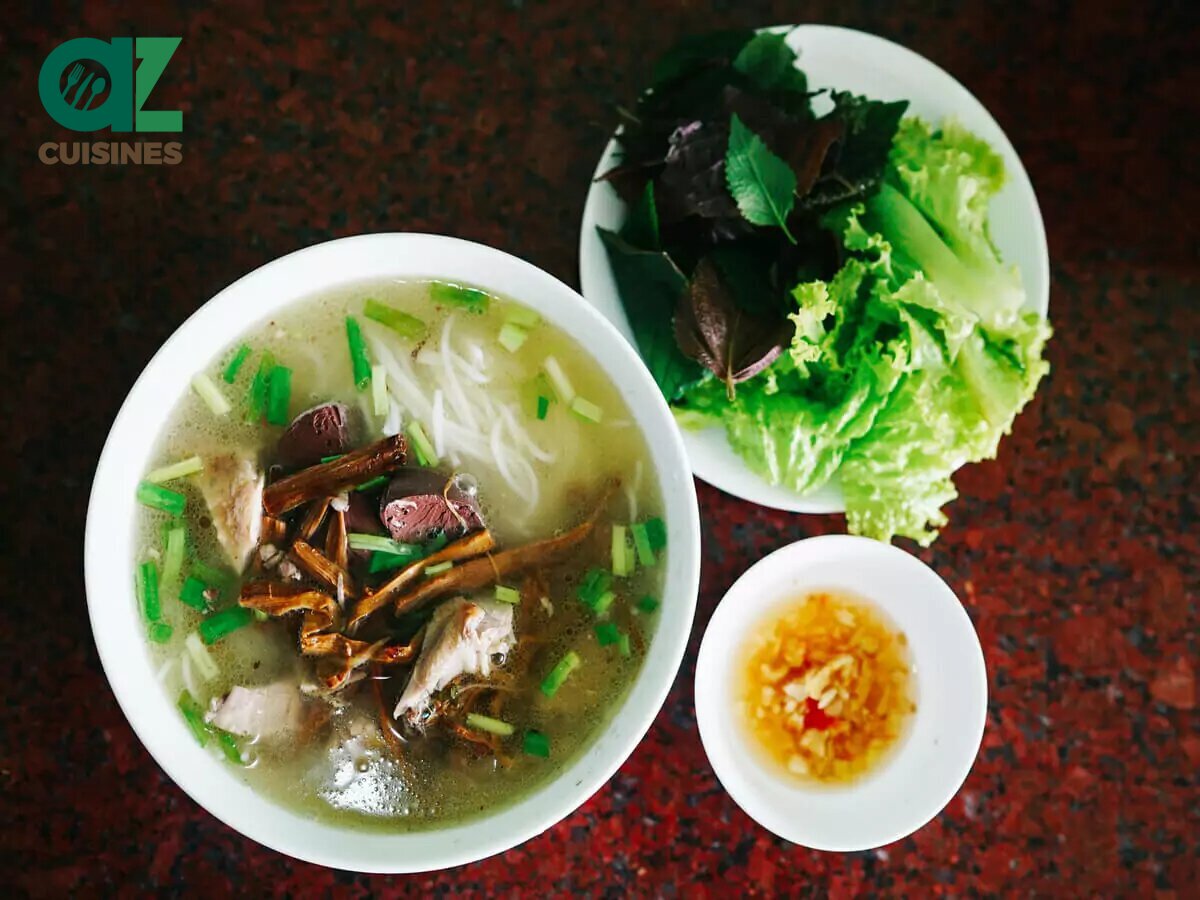

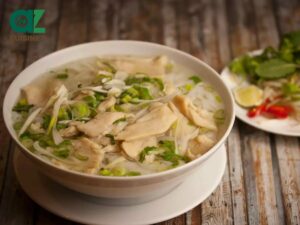
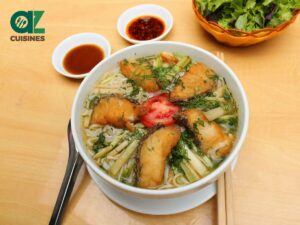
Truc Tran (Kris)
Senior Food Editor
Expertise
Home Cooking, Meal Planning, Recipe Development, Baking and Pastry, Food Editor, Cooking-video Maker, Vietnamese Food Evaluation Expert
Education
Truc Tran (Kris), an experienced food writer and editor, is great at exploring and describing global cuisines, from simple street food to fancy dining. In her writing, she skillfully mixes different flavors, cooking methods, and culinary traditions, showing the unique character of various cultures through their food and drinks. On azcuisines.com, Kris highlights her knowledge, especially in Asian cuisine and worldwide traditional dishes.